I am a curious-cat when it comes to trying to figure out why things around the globe can be similar. Be it a dancing style or food. Personalities or songs. Cut green-apple surfaces and the face of an owl. This has happened several times with me. When I first tasted Ethiopian cuisine, way back in 2003, I was in awe to realize how similar this was to Indian food-fare. And, why not? Since the 1400’s, traders have introduced some non-indigenous ingredients that have added to what we now know of as authentic Ethiopian cuisine.
From Portugal came chile peppers, and from the Orient—ginger. India played a part in North African trade as well, introducing all the exotic spices that form the basis of the spiced butter called Berbere( a medium that is used for their culinary fare). Or the Flamenco. How similar is it with (yes, Kathak), but also conceptually with all our other Indian classical dances! While all other western dances have independent movement of the hands and the feet, I was very pleasantly surprised to see how easy it was for me to pick up the Flamenco(with my background of Bharatnatyam), because of the interdependence the hand movements had with the foot movements in terms of direction, sway, language, expression as well as rhythm. And it did not surprise me that the husband who is an excellent dancer himself, with his background of western ballroom and salsa found it quite trying! Western ballroom dances use minimal convergence of hands and legs. Its a close hold with vigorous footwork and times, or heavy sways and beds and swirls, with minimal hand-work at times.

So, it wasn’t completely unexpected when I ended up comparing salsa with the extraordinarily refreshing Peruvian cuisine, I tasted last month at Andina, in London. Salsa (the music) is named after the Spanish word for hot sauce. This is probably because of the zesty taste of the condiment that can be found in the tunes and moves of the music. For a minute now, compare it to the aji amarillo, a yellow chilli that gives Peruvian cuisine the zing and the dang! But the similarity does not end there. Just like salsa is a mixture of many different kinds of Latin , Puerto Rican, Dominican, Afro-Cuban, jazz and even rock music strains and cultures, so is Peruvian cuisine, if you see! Peruvian cuisine is the result of a nearly 500-year melting pot : mixing the best parts of spicy Spanish, the tempestuous African, the demure Japanese and lively Chinese immigration. Then of course is the pre-dominant influence of the mysterious Incas and the native Quechua( pron: kech-wah) culture Peru soaks in!

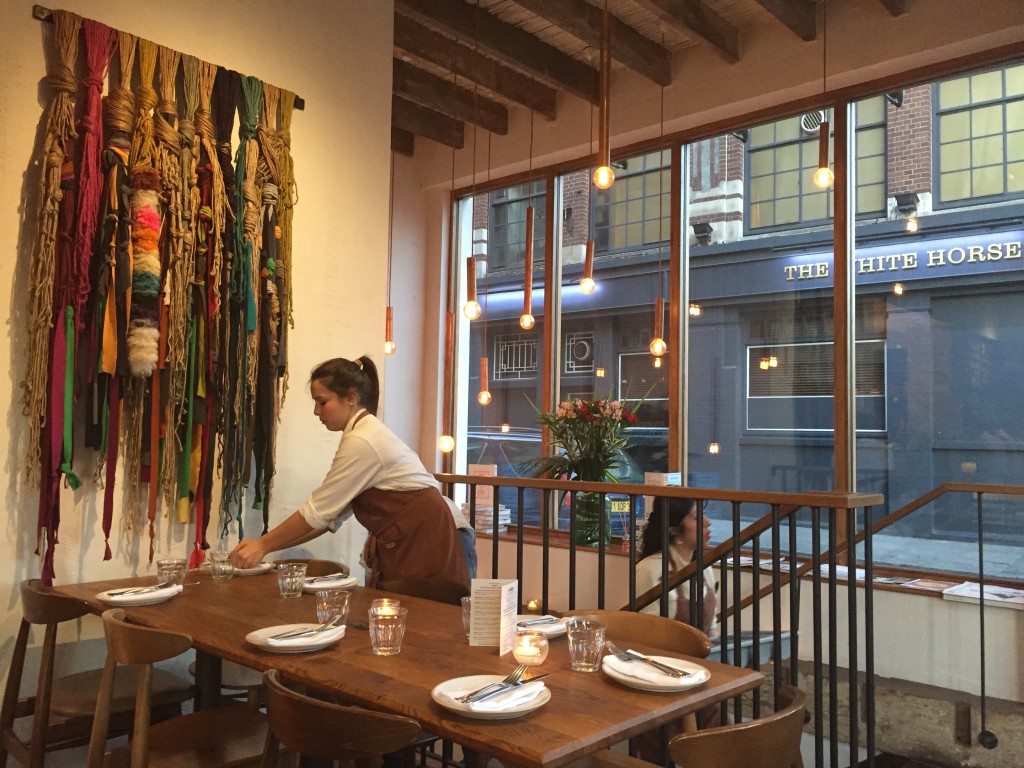
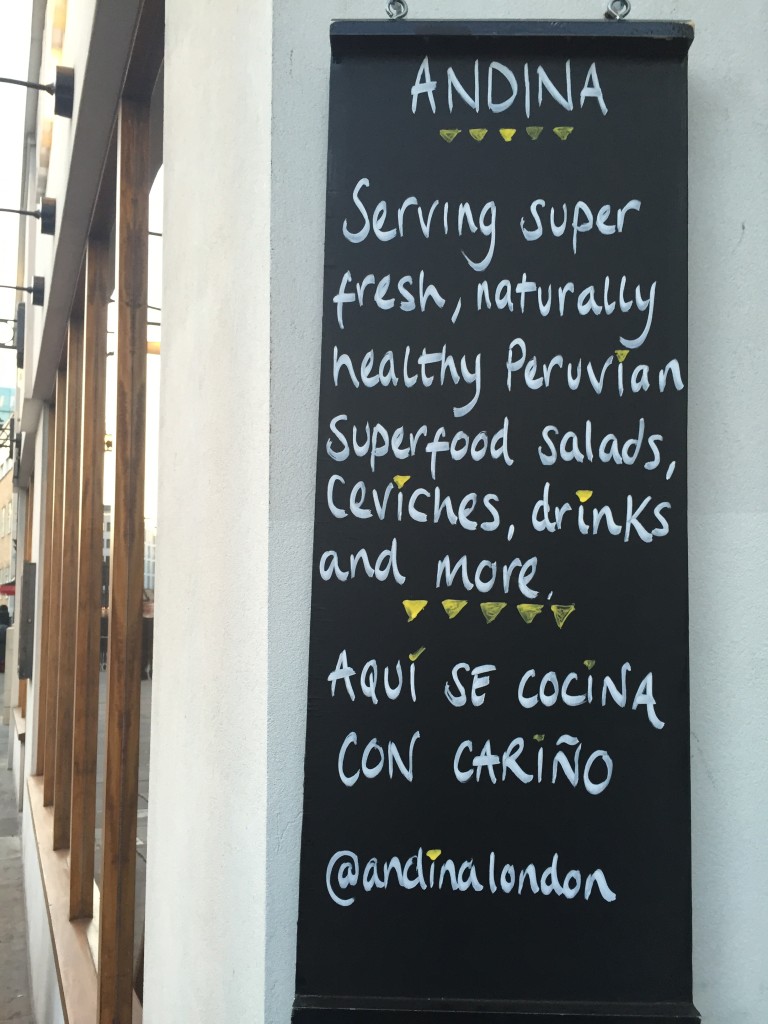
Andina is as much a bar as a restaurant, attracting a lively mix of well-dressed Peruvians and otherwise, on both the smaller ground floor and in the bar of the much larger basement dining room. The food presented is pretty as a picture. Delicate and alluring. The upbeat music is well-chosen; Andina’s owner is a former DJ and a music biz honcho. It is a place with exciting food, housed in a space which would be quiet and comfortable in the daytime and exciting at night. The location is in the quaint Redchurch Street in Shoreditch, where the backstreets have vintage cars parked in front of their porches, and flower pots hung from the balconies.

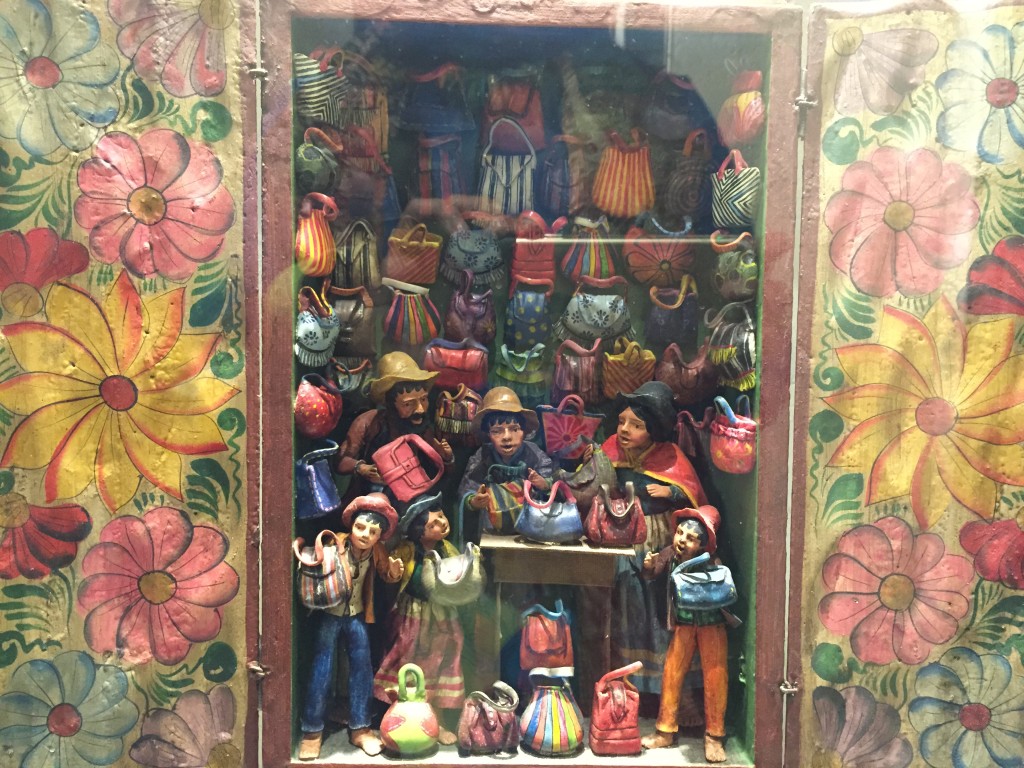

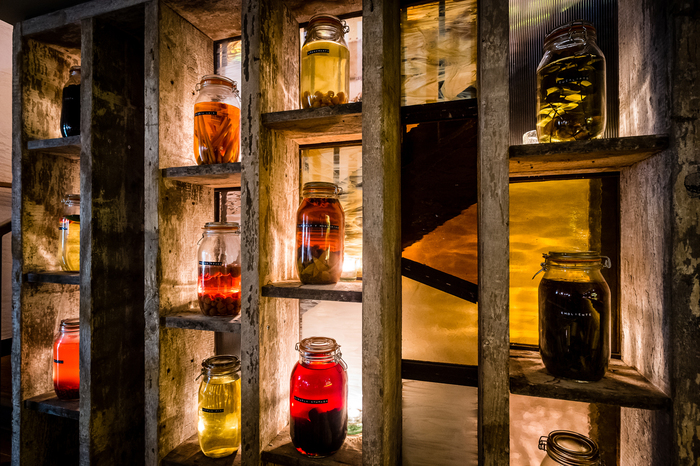

For starters, let’s start with Nibbles! A starter is a good way to orient oneself to a great Peruvian meal. Unheard of in Peru until the 17th century most Peruvian starters today often replace a full meal or are also eaten as a small lunch or snack. Here is what I had-
Cancha:
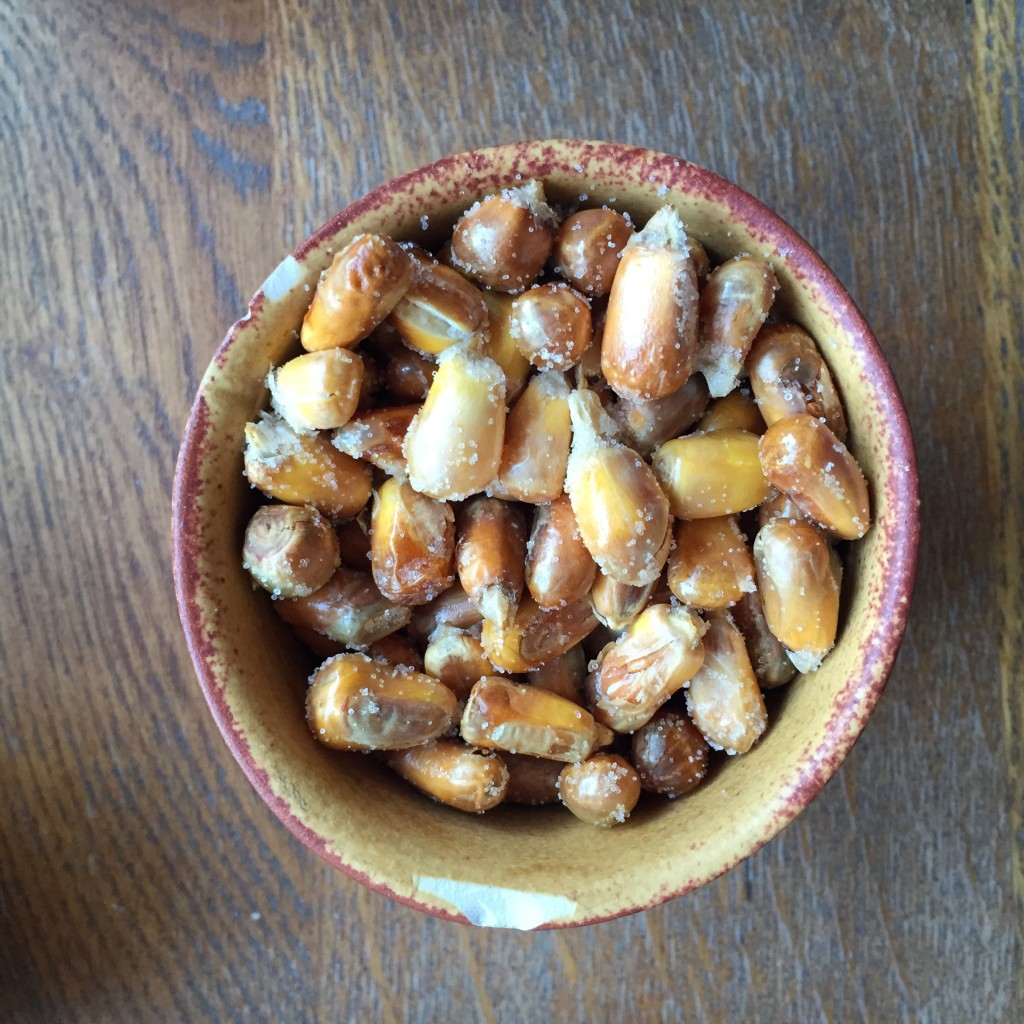
Its crunchy corn, but its special corn! Cancha is a popular snack in the Andean countries, often served alongside ceviche. It’s a popcorn made from a special variety of corn called Maiz chulpe. Maiz chulpe is a yellow corn grown in Ecuador especially for drying and then toasting. In the package, it looks a lot like popcorn—well, relaxed popcorn, since the kernels aren’t nearly so taut and bulbous. The pointy kernels pop when heated, and will even jump right out of the skillet, but the inside of the corn does not burst or bloat up like regular popcorn. Instead, cancha corn gets slightly puffy and toasted, like corn nuts, and it has a starchy crunchy taste that is quite addictive. The killer sealer is that they are ‘popped’ with pork fat!
Mini Pork Chicharróns:
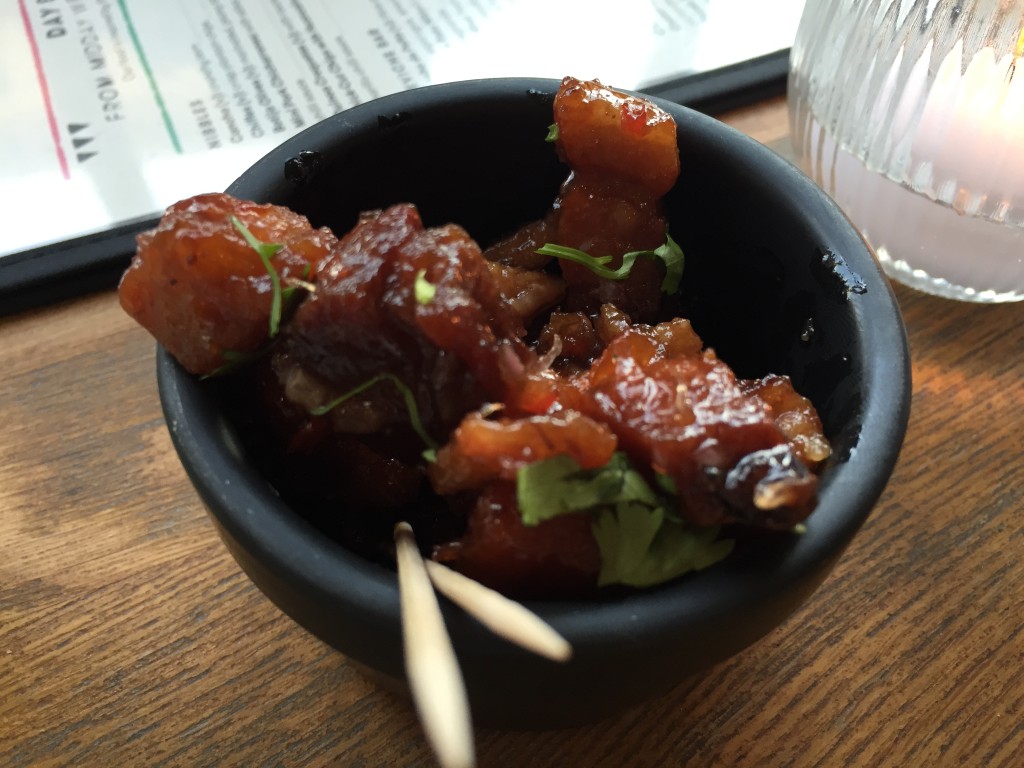
If you are counting calories, I wouldn’t eat chicharróns every day! They make this with pork rind. Or chunks of pork belly, rubbed with baking soda and salt to make it brittle, brown and flaky. The meat or the rind is placed in a low flame water-bath with spices and seasonings (cayenne, sugar, paprika perhaps?) till no water remains, and then hike the heat up to have it fried in its own fat. As good as therapy for me! The layer of meat was crispy on the surface yet tender on the inside. Best of all, the fat cushioning the skin and the flesh was sweet and solid, with just a small burst of porky juice flowing from each bite. On the side was salsa criolla, a relish made of onions, aji amarillo chilies, lime juice and a few cilantro leaves and a chilly sauce made with the shiny and cunning ricoto peppers; a simple mix of intense flavor, piquant and colorful and a crunchy texture that awakens all your senses!
Quinoa Croquetas:
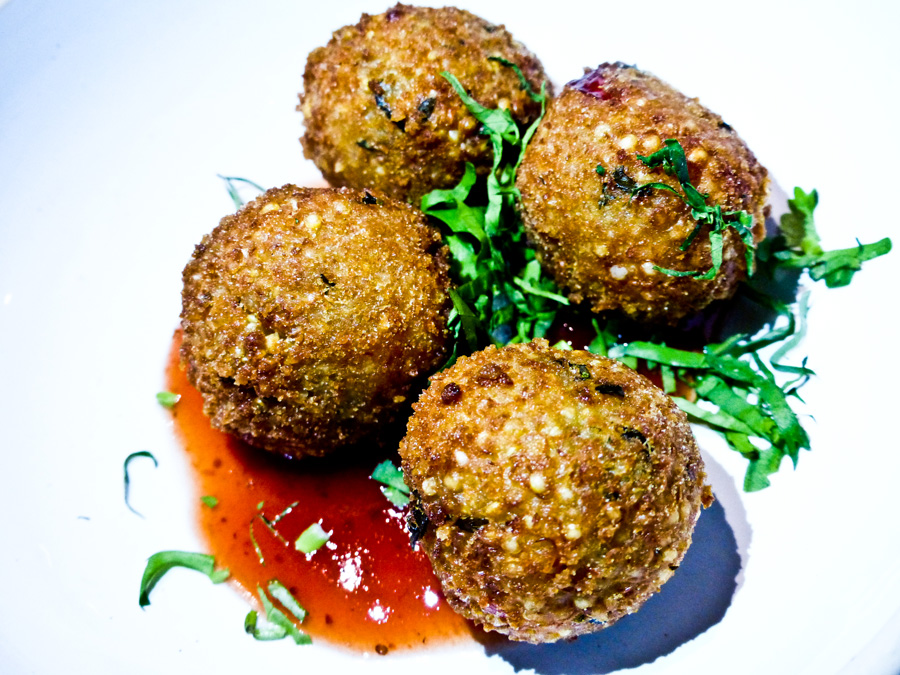
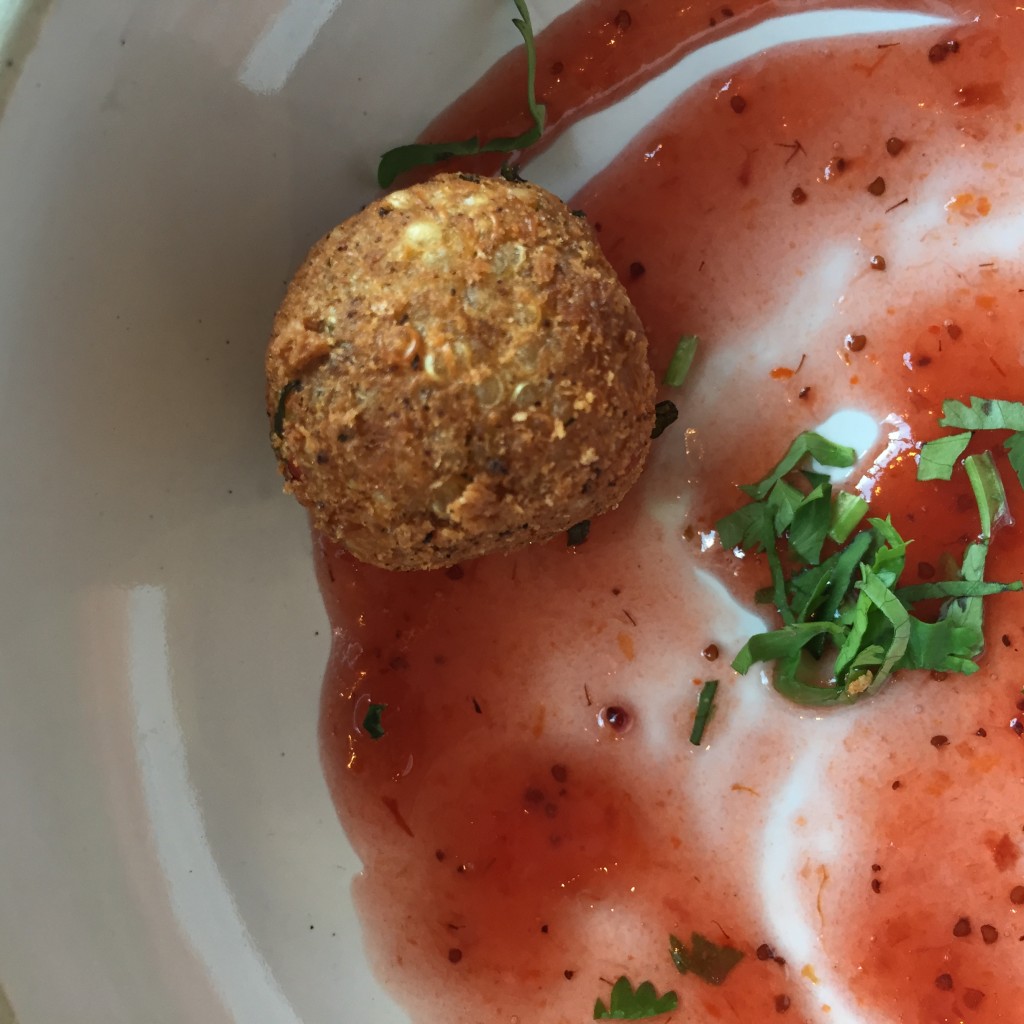
Quinoa is a high protein grain that has been cultivated for centuries in the Andes mountain regions of South America. These quinoa croqettes are made with cooked quinoa, ham, and parmesan cheese. Crispy on the outside and soft and crumbly inside, these make a delicious warm appetizer Made with simple Peruvian ingredients like queso fresco (fresh white cheese) and the essential aji amarillo (Peruvian yellow chili) this spicy sauce is considered as Peruvian comfort food at its best!
From the Ceviche section, next came tiraditos, which are really the younger brother of ceviche.
Ceviches became well-known in the last 20 years or so in traditional Peruvian cuisine and much of its credits goes to Japanese immigrants who ate raw fish in their meals. Some gastronomic experts also suggest it’s closer to Italian carpaccio, popularized earlier in the 20th century by Genovese immigrants. A take on ceviche published in the Guardian:
“Ceviche, for those that steer clear of such vulgar things as trends, is, at its most basic, raw fish marinated in citrus juice and spices; the acid in the juice breaks down the protein in the meat in much the same way as cooking would. The flesh becomes opaque, the texture firmer and dryer, yet the flavours remain spanking fresh: it’s the perfect zingy dish for a warm autumn day. American chef Rick Moonen describes it as a ‘citrus cocktail’, which sounds about right.”
Two are the main differences between these two cousins- the cut and onions. While ceviche is cut in bite-size cubes and comprises a generous amount of onions, tiradito is sliced in fine, long pieces and carries no onions.
Tiradito de Pato Nikkei:
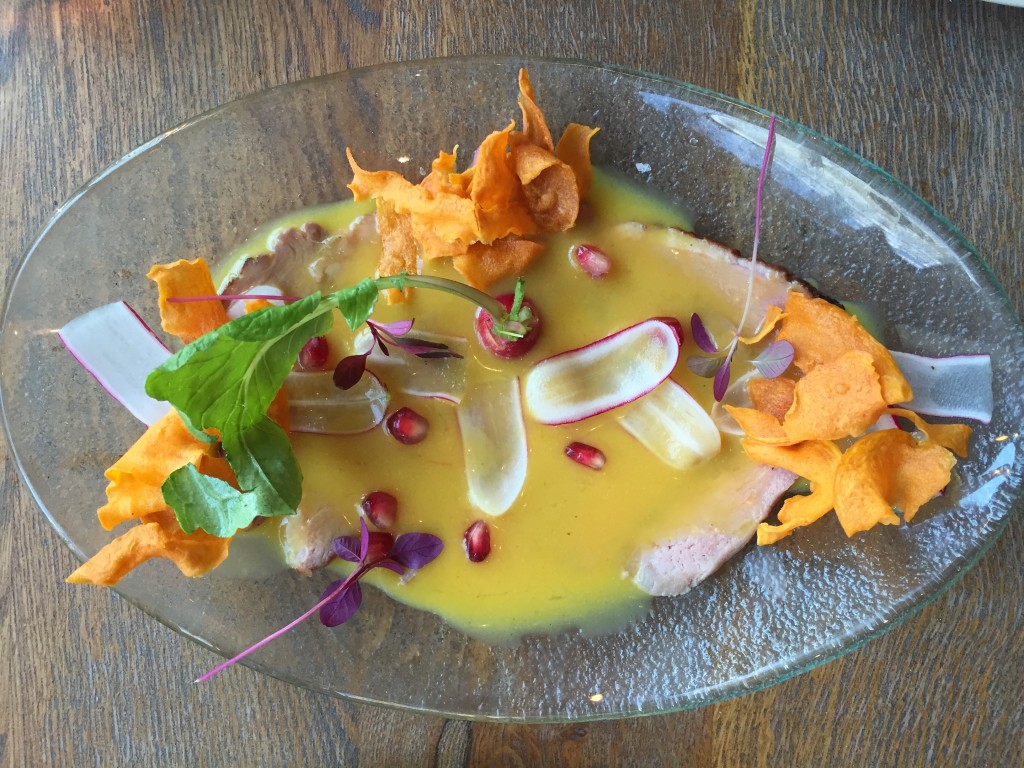
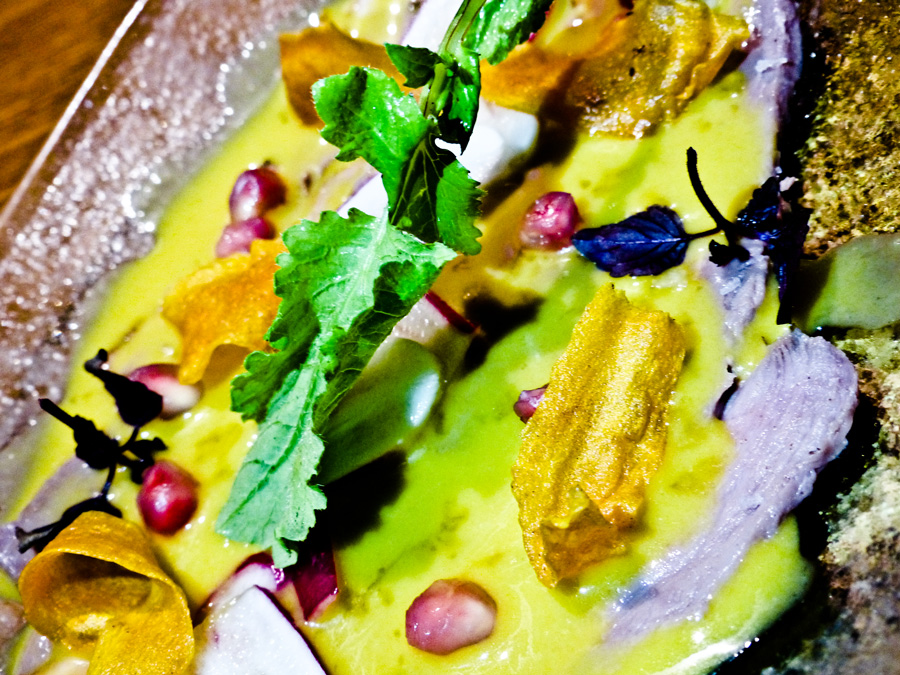
Tiradito is a dish that could only have been born in Peru, and some say that it’s the perfect marriage between the Peruvian ceviche and the Japanese sashimi. Thinly sliced fish swimming in a spicy sea of citrus, this pays homage to the fusion of two cultures, which began over 100 years ago when the first Japanese immigrants arrived in Peru on a ship called the Sakura Maru. Nikkei usually means things or people of mixed racial descent – which I presume applies to the food as well. Perhaps the tiradito is the dish that best represents the Nikkei. For what else is a fine tiradito but a version of the sashimi? When the first Japanese immigrants arrived in Peru early in the previous century, they brought with them their ingrained habits, which were able to adapt, over time, to theirs. This marriage of flavours, whose offspring would be born, decades later, is now known as Nikkei cuisine, a fusion of Peruvian creole flavor with the Japanese. Marinated in lemon, no onions and peppers, hot peppers or olives, sweet potato and corn kernels, the tiradito, would have been created in Japanese restaurants that started their business in the poor neighborhoods of Lima in the early twentieth century.
This pretty thing on the plate came with slices of duck breast, served with yuzu tiger’s milk, red radish and pomegranate seeds. You ask what is tiger’s milk? Well, nothing to do with milking a tiger! Leche de tigris, or tiger’s milk, is the Peruvian term for the citrus-based marinade that cures the seafood in a ceviche or a tiradito. Also known as leche de pantera, this leftover fish runoff usually contains lime juice, sliced onion, chiles, salt, and pepper — along with a bit of fish juice and is believed to be both a hangover cure as well as an aphrodisiac! The bright yellow that overpowers the visual of this dish is from yuzo. Another Japanese ingredient that tastes like a mix of lemon, mandarin and grapefruit and is a rare costly citrus fruit from Japan . To me this dish is best described as ‘sunshine on a plate’!
Teradita de Conchas:
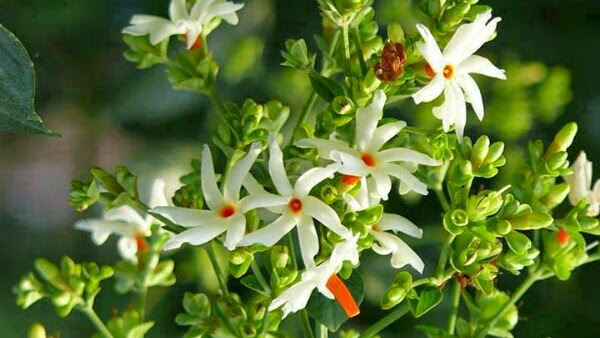
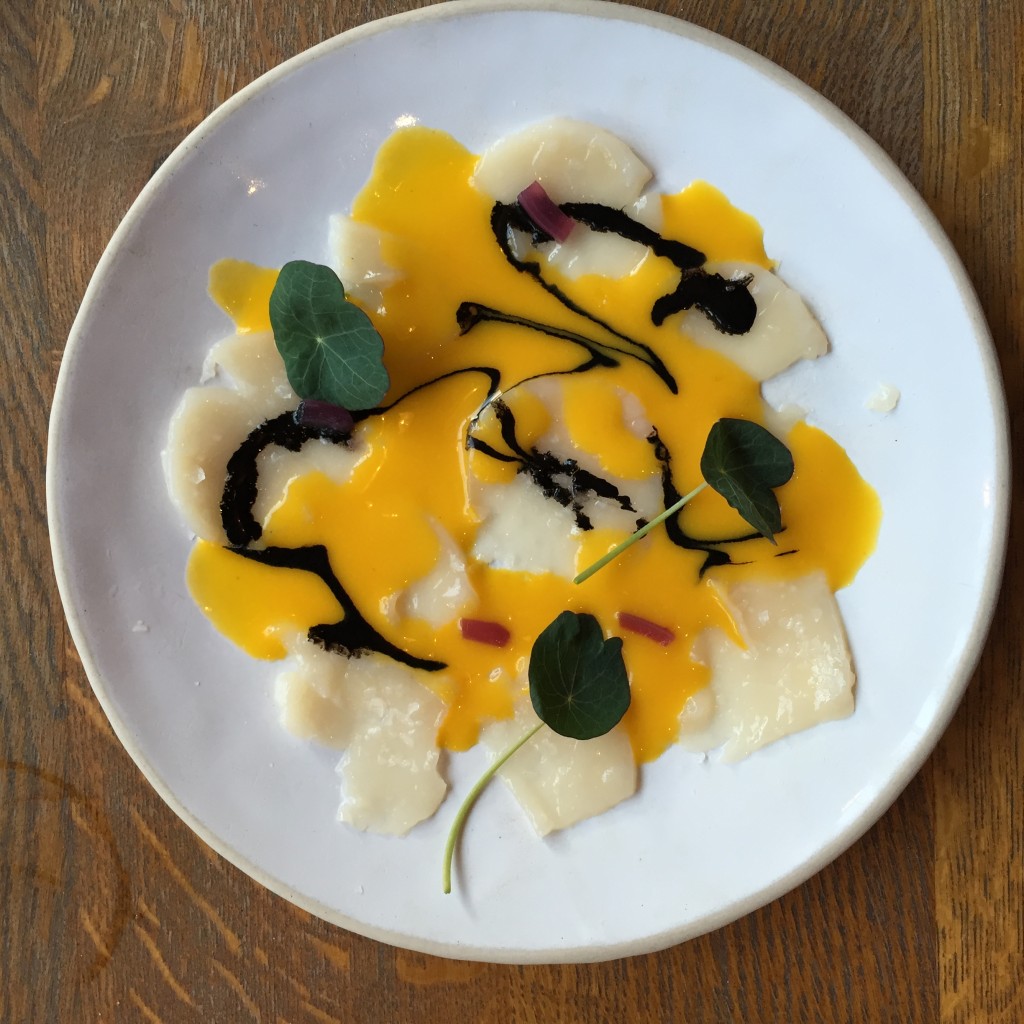
When the plate arrived at my table, I paused- simply to admire. It was as if someone had spread a zoomed version of my favourite shiuli flower( the coral or night flowering jasmine/ parijata), and splashed on it a generous helping of marigold petals! Thinly diced diver scallops, mango puree infused tiger’s milk, a dramatic dash of squid ink, with a side of pickled red onions.
Over to the Classics, as they call it!
Corn cake with Avocado:
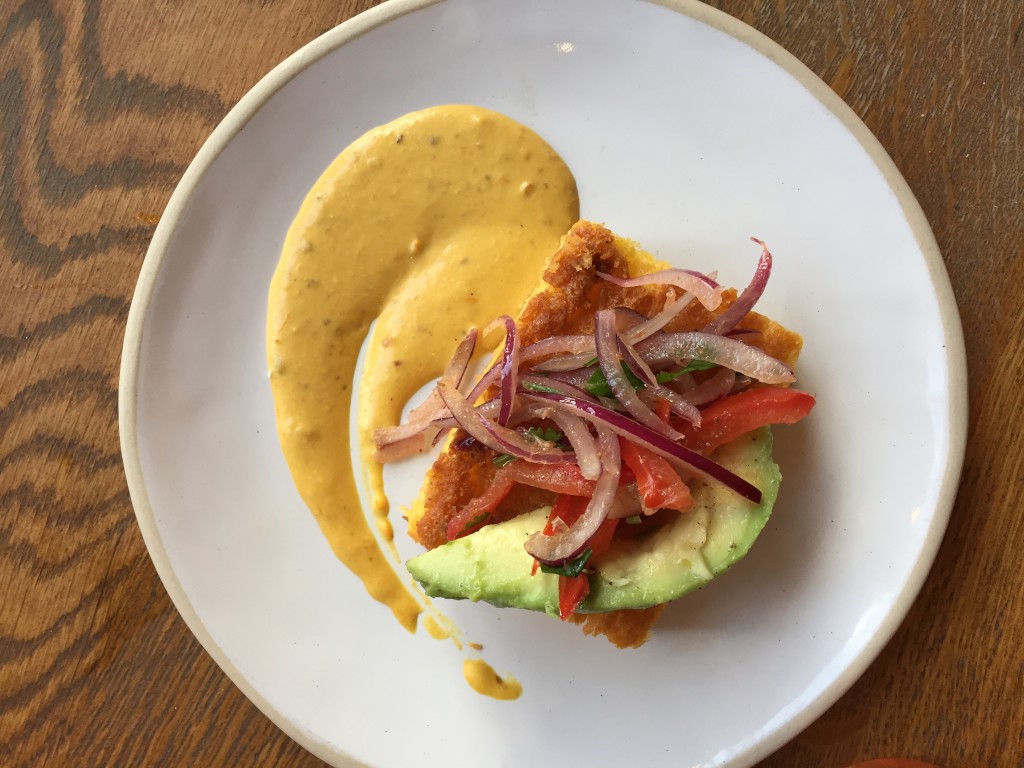
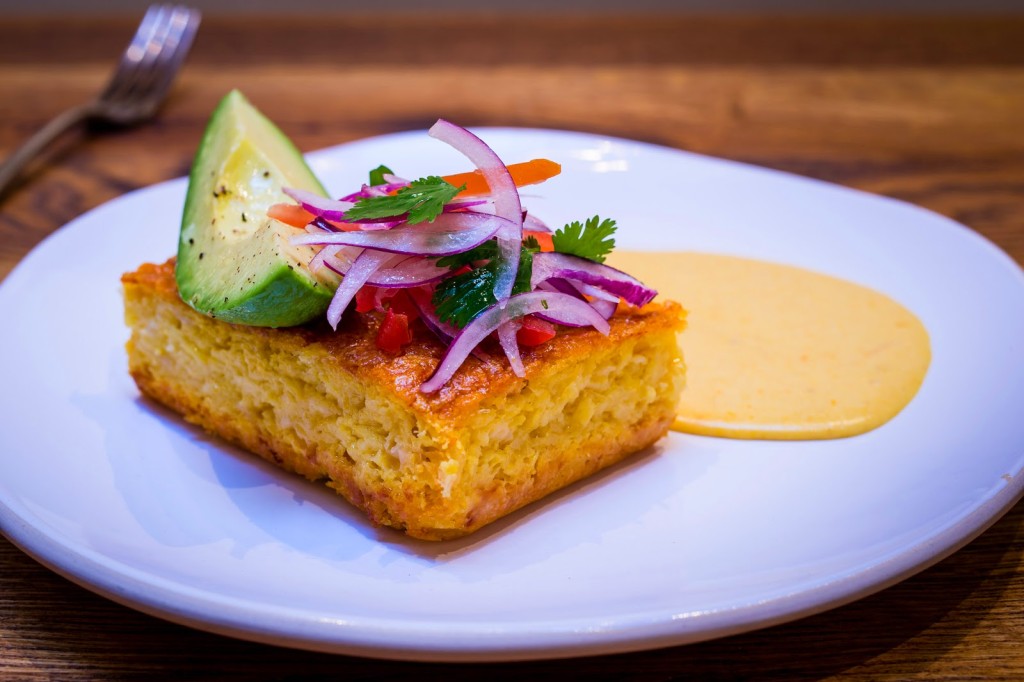
This was the carb component of my meal. Grains are a big part of Peruvian cuisine. This one came moist in the inside and crumbly and provocative on the outside, again sitting pretty on a plate, served with salsa criolla and sharp slices of delightfully citrus spiked bits of red onions.
Lengua de Arguedas:
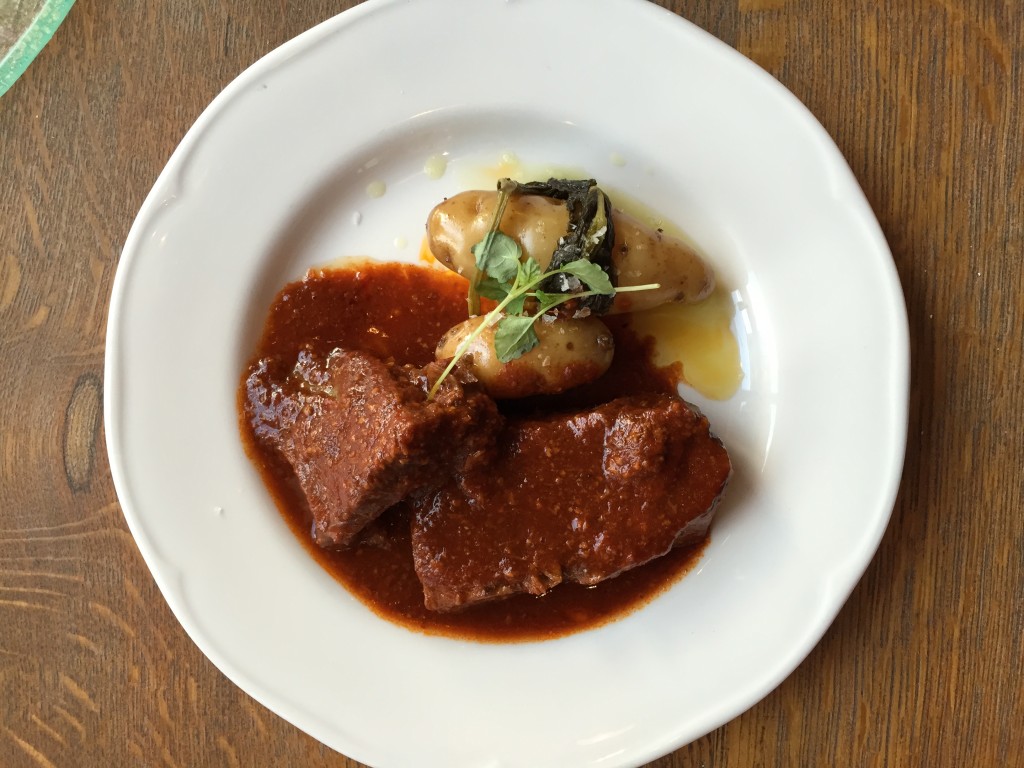
Perhaps this was a dish which was a favourite of the famous Peruvian poet Jose Maria Arguedas! I couldn’t figure out why else this dish would carry his name! All I could concentrate on was that the lengua, or the ox-tongue was absolutely delicious! It tasted just like any normal piece of beef would, except that it was buttery soft, dense and rich. It was slow cooked in a piquant brown stew, with voluptuous oca tubers( another rare south American root vegetable from the yam family), soaked in a beer and a panca chilly(another bright burgundy Peruvian chilly) infusion with silly little cress leaves scattered on it.
Seal it then, with the sweetness of the Desserts..
Huayno de Chocolate:
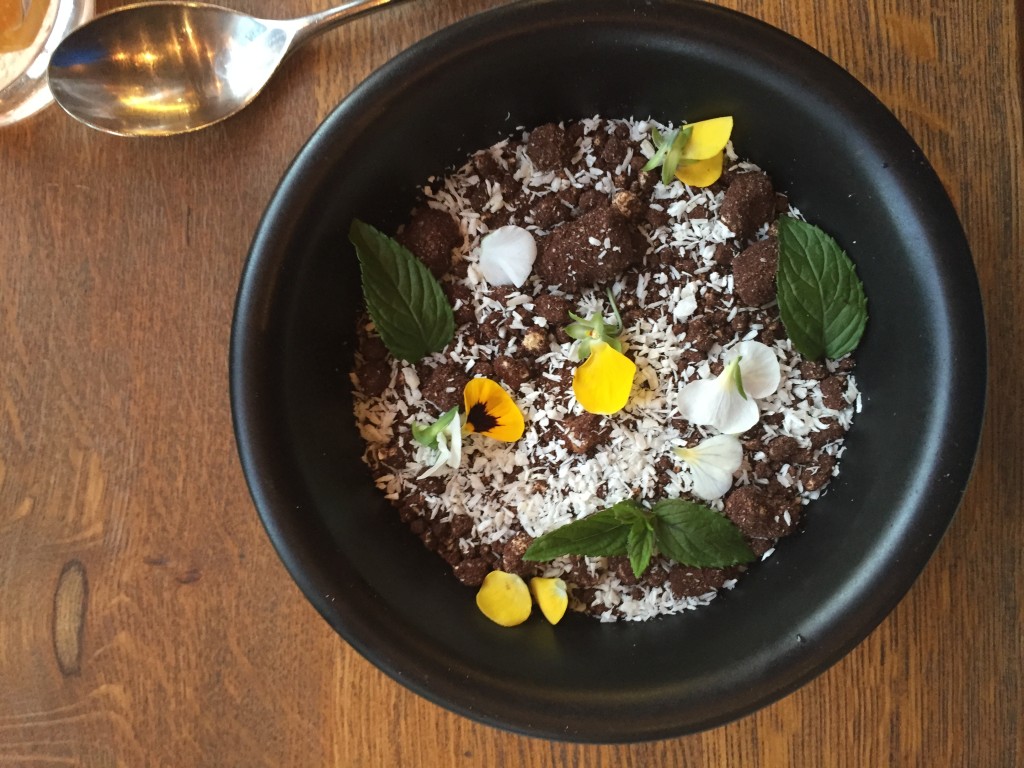
That’s dessert. A pretty bowl filled to the brim with a chocolate and avocado mousse, swirled with a peculiar combination of tamarillo fruit sauce, that leaves behind sharp aftertastes of tang or sweetness (tastes similar to kiwifruit, tomato, or passion fruit) and the chancaca syrup that is an orange peel spruced sweet sauce made from sugarcane extracts. Sprinkled on top was purple corn crumble and bits of sweet plantain chips.
The Peruvian meal wouldn’t have been complete without the Pisco from the selection of Pisco Bar Cocktails
Cholo Sotil:
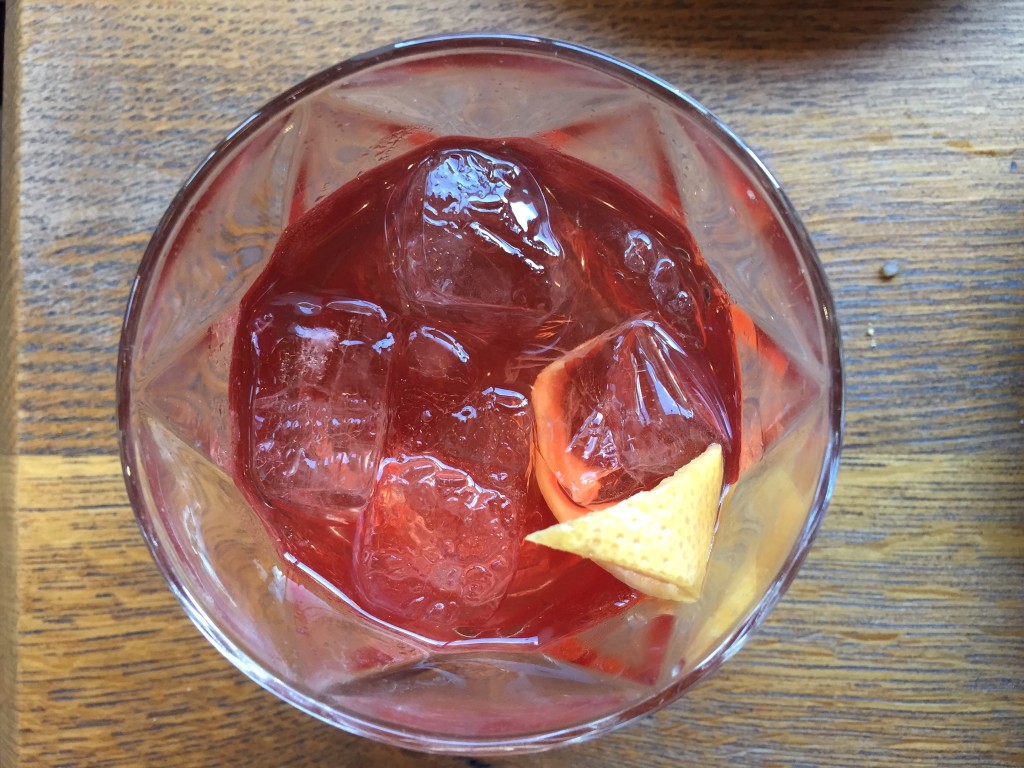
Meaning ‘ little bird’ in the native Andean language of Quechua, pisco is a grape brandy produced in Chile and Peru. It came about in the 16th century, when the conquistadores who had colonised the region began to grow grapes to make wine. The results were then distilled to create pisco. This high-proof spirit was developed as an alternative to Orujo, a pomace brandy, which at that time had to be imported from Spain. Mine was a refreshing one called Cholo Sotil, that was a pisco flavoured with beetroot, grapefruit, tomato shrub and madeira wine.
So, step aside Spain and Korea, say Salud to Peru .. they are having their moment in the gastronomic sun. Con mucho cariño, Andina!

Sambrita Basu is a food-fascinated travel writer and photographer based out of Bangalore India. A background and a degree in hospitality and restaurant management paved her interest in food. As the secretary of the institution’s editorial club, she contributed regularly and wrote about food in their annual magazine, A la Carte.
Sambrita has published interviews of celebrity authors and business veterans in international publications like Infineon. Her contributions also include photographs on foods and restaurants of Bangalore for DNA—a leading newspaper publication in Bangalore. Sambrita’s creative expressions transport readers to alleys, hotels, hide-outs, restaurants, attics, and spice markets in several cities across the world.
Sam (as she is popularly known by her friends and family) doesn’t write for a living, but she lives to write.








